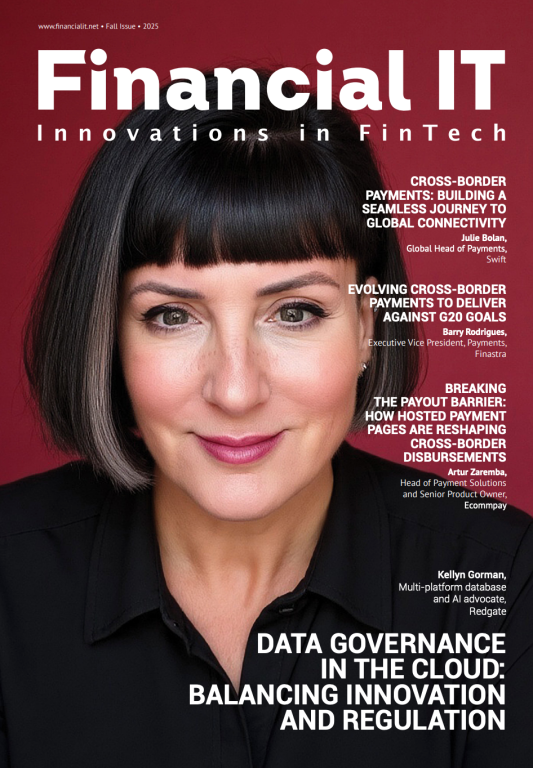How Fintechs Can Help Banks Spot Financial Distress Before It Hits

- Jacob Bennett, Co-founder at Crux Analytics
- 14.07.2025 04:45 am #FinancialDistress #FintechSolutions
America's small businesses are in trouble, and most don't even know it yet.
I know this because I've been there, running a small business while watching the economic ground shift beneath my feet, wondering if my bank even noticed I existed beyond my line items. After years of consulting with Fortune 500 companies and watching the pandemic expose just how broken our financial support system really is, I can tell you the problem runs deeper than most people realise.
Despite contributing 44% to the USA's GDP, small businesses have faced increasing financial vulnerability since 2020. The pandemic created a vacuum of resources, forcing small businesses to battle alone when they were most desperate for support. 2020 made evident what many of us on both sides of the small business banking equation had experienced: that our financial system is not equipped to support small businesses.
Traditional financial institutions, drowning in operational burdens, continue to rely on outdated systems that only spot problems after they've already taken root. For larger commercial businesses that have teams dedicated to financial operations, this reactive approach can work; but for mom-and-pop shops, it turns manageable challenges into crises that can shut down businesses.
The most transformative opportunity lies in intelligent monitoring tools that can spot trouble before it hits and connect businesses with strategic support.
The Perfect Storm
Small businesses today are caught in a perfect storm of economic volatility: supply chain disruptions, labor shortages, and shifting tariff policies create an environment where entrepreneurs are forced to prioritise short-term survival over sustainable growth. Think about a restaurant owner who used to have reliable suppliers but now can't count on anything. They're constantly scrambling for alternatives that cost double, all while watching their best cooks walk out the door.
The traditional banking model treats small businesses as line items rather than partners. While these businesses increasingly value expert guidance over simple transactions, most banks continue to operate with reactive approaches that kick in only after financial distress has already begun to show in the numbers. Bankers, overwhelmed by operational tasks and working with outdated tools, often miss the early warning signs that could prevent a crisis.
This creates a vicious cycle: small businesses struggle alone with challenges they could overcome with timely support, while banks miss opportunities to strengthen relationships and prevent defaults.
The Intelligence Revolution in Financial Monitoring
New monitoring tools can fundamentally change how institutions engage with small business clients. Instead of waiting for quarterly reports or messy financials to surface problems, modern systems constantly monitor client relationships, spotting opportunities and warning signs in real time.
While a banker grabs their morning coffee, these systems have already identified three restaurant clients experiencing unusual drops in weekend traffic, flagged a retail client whose customer demographics are shifting, and surfaced a manufacturer whose supply costs are trending upward faster than industry peers.
These platforms reduce workflows from hours to minutes, freeing bankers to focus on building trust and providing strategic guidance. The most sophisticated systems focus on the deeply human side of banking that technology should enhance, not replace. Great banking relationships mean a banker who knows Sarah's bakery struggles every January after the holiday rush, or that Tom's auto shop carries three generations of family legacy.
Turning Risk Into Opportunity
Institutions using early warning systems can reduce small business default rates dramatically. In some cases, targeted support measures have reduced distress rates among small and medium enterprises from 19% to 7%.
The real power lies in spotting trouble through local signals before it hits the books. When foot traffic drops at a client's restaurant or their customer base starts shifting, that's your early warning, long before their finances show the problem. Banks can then offer meaningful support through marketing advice for struggling restaurants or inventory strategy for shifting retail demographics. By acting on these early signals, banks can build lasting relationships while preventing financial distress.
The Path Forward
The technology exists: fintech solutions can streamline routine tasks and surface critical insights, allowing bankers to focus on building strategic relationships. Banks that provide anticipatory client support at scale achieve higher retention rates, improved satisfaction scores, and sustained growth.
The question isn't whether this transformation will happen, but which institutions will lead it. Small businesses power our communities and drive innovation, but they need partners who can see around corners and provide support before challenges become crises.
This isn't just about spotting financial distress before it hits. It's about spotting opportunities before your competitors do, building relationships before your clients desperately need them. Small businesses driving 44% of our GDP deserve better banking relationships that help them thrive, not just survive.
The question isn't whether you can afford to change. It's whether you can afford not to.



















